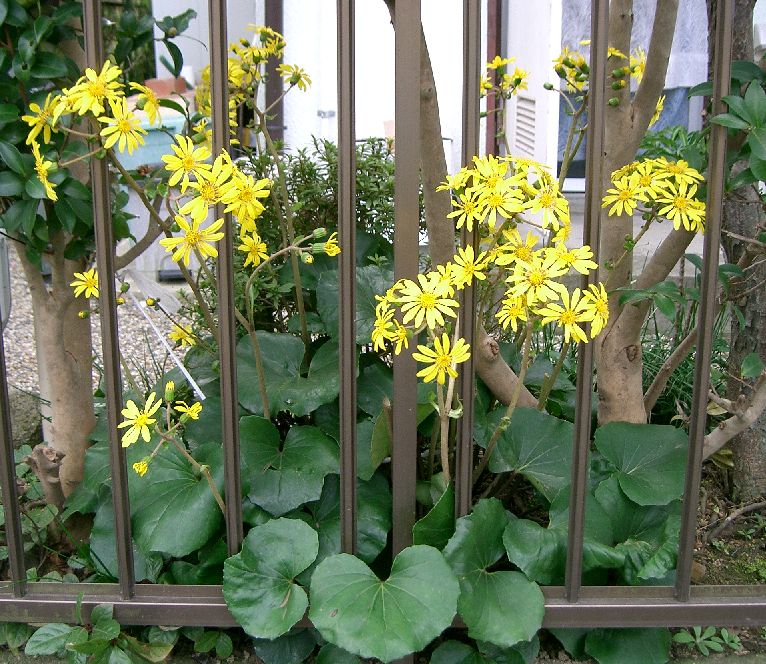
Also known as tractor seat plant, this tender herbaceous perennial is native to moist meadows, stream banks, and coastal areas of Japan and eastern Asia and is a member of the aster family, Asteraceae, that also includes daisy, yarrow, and lettuce. It has a rhizomatous root system and forms a basal clump up to 2′ tall of large, dark green, glossy leaves that are round to kidney-shaped and carried on long petioles. The leaves are leathery, up to 12″ across and are evergreen in warm climates. From late summer into fall, loose cluster of yellow, daisy like flowerheads 1-2″ across appear on branched, mostly leafless stems up to 30″ tall. Cultivars are available that vary most significantly in leaf coloration, size, and texture. Leopard plants are a good choice for pond and stream sides, as well as woodland, shade, bog, and water gardens. In addition, it does well in containers. The genus name, Farfugium, comes from the Latin word far meaning spelt, and fugere, meaning to run away, and refers to the early disappearance of the white dust-like substance on the petioles and floral stems. The specific epithet, japonicum, is the Latinized word meaning Japan, and refers to one of the countries where the plant is native.
FType: Tender herbaceous perennial
Bloom: Yellow daisy-like flowers in late summer to fall
Size: 1-2’H x 1-2′ W
Light: Partial sun to part shade
Soil: Humusy, consistently moist, well-drained
Hardiness: Zones 7-10
Care: Protect from wind and too much sun
Pests and Diseases: Generally healthy but susceptible to damage by snails, slugs,
Propagation: Division in spring
Companion Plants: New Zealand flax, Garrya eliptica, hosta, fern
Outstanding Selections:
‘Argenteum’ (white markings on green leaves),
‘Kinkan’ (yellow edged green leaves)
‘Crispatum’ (leaves are curled like lettuce and come in various shades of green)
var. giganteum (very large leaves up to 18″ across)
Photo Credit:Wikipedia